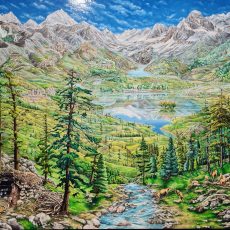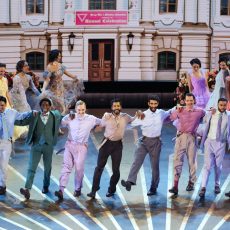Swami Chaitanya KeertiDance, music and various other forms of creative arts are therapeutic. These expressions of art unfetter the human psyche and reconnect the individual to his or her inner source of healing energy. The practitioner gets rid of many diseases which were caused by mental disorders or disabilities. The recent article written by Ms. Rachel Verghese in the national newspaper, Indian Express mentions a certain case-study. Ms. Tejali Kunte, a 26-year-old Vile Parle resident, conducts regular sessions in dance and movement therapy, which use dance movements to support intellectual, emotional and motor functions of the body. It is reported that Six months after Tejali Kunte wrote an article on dance therapy in a newspaper in 2015, a woman contacted her, having gone great lengths to find her. The woman’s child had a mental disability and she wanted Kunte to hold dance therapy sessions with her child. Happyho also provide best Meditation classes in Noida and Delhi NCR India area.“The child loved to dance. She didn’t respond to any therapy or treatment that her parents had arranged for her, but whenever she would see dance shows and/or hear upbeat music, she would dance,” Kunte says. The child was her first client and since then, Kunte has been conducting dance therapy sessions with many including patients of Parkinson’s, persons with mental or physical disabilities, women rescued from human trafficking, pediatric cancer patients at Sion Hospital or anyone else who seeks to consult her.People may wonder: how does dance work as therapy. There are many examples and many mystery schools who have been experimenting in this particular dimension, though not exactly for physical healing only. Their approach has been holistic. George Gurdjieff. Osho disciple Savitri has also been experimenting a dance therapy called POI. Two years ago, Ma Punya of www.oshonews.com interviewed her about it and she was informed that Poi dance movements are often used in occupational therapy, a discipline I was trained in. As you might know, in occupational therapy we always use a tool as a bridge, be it pottery, painting on silk, or basket weaving, so I have been using poi. For instance, we work with disabled people maybe after a stroke or an accident, with hyperactive kids and old people with dementia.“From a neurological point of view we can say that the right hemisphere of the brain is responsible for the rhythmic movements and the left hemisphere for their sequence. Both hemispheres are needed for an aesthetic flow of the movements; both working together helps them integrate, promoting the flow of information across the corpus callosum, the connecting bridge between the hemispheres. And by simultaneously making different movements with the left and right half of the body we train our coordination. It works in a similar way as the Gurdjieff dances.“POI swinging is also good for meditation, it helps centering and to learn how to be in the Here and Now, because you cannot think and swing the poi at the same time; as soon as you start thinking you make a mistake.”Ms. Kunte’s 20-minute dance session is followed by breathing exercises and a unity circle, with soothing music playing in the background.Rhythmic breathing helps energy to flow into dance very naturally. It unblocks the energy flow. Dancing transforms it into joy and bliss because when you dance totally, your spirit or soul also is also included–while the interference from the mind is set aside. The energy stuck in the mind becomes free and is available to your whole being.Osho suggests a dynamic method of meditation, before reaching the final stage of existential dance. In the talk Beyond Enlightenment, the enlightened master says: So first, throw out all crap that you are carrying. Everybody is carrying so much crap, and one wonders, for what? Just because people have been telling you that these are great ideas, principles…. You have not been intelligent with yourself. Be intelligent with yourself.“Life is very simple; it is a joyful dance. The whole earth can be full of joy and dance, but there are people who are seriously vested in their interest that nobody should enjoy life, that nobody should smile, that nobody should laugh, that life is a sin, that it is a punishment. How can you enjoy when the climate is such that you have been told continuously that it is a punishment? – that you are suffering because you have done wrong things and it is a kind of jail where you have been thrown to suffer? I say to you life is not a jail, it is not a punishment. It is a reward, and it is given only to those who have earned it, who deserve it. Now it is your right to enjoy; it will be a sin if you don’t enjoy.”





